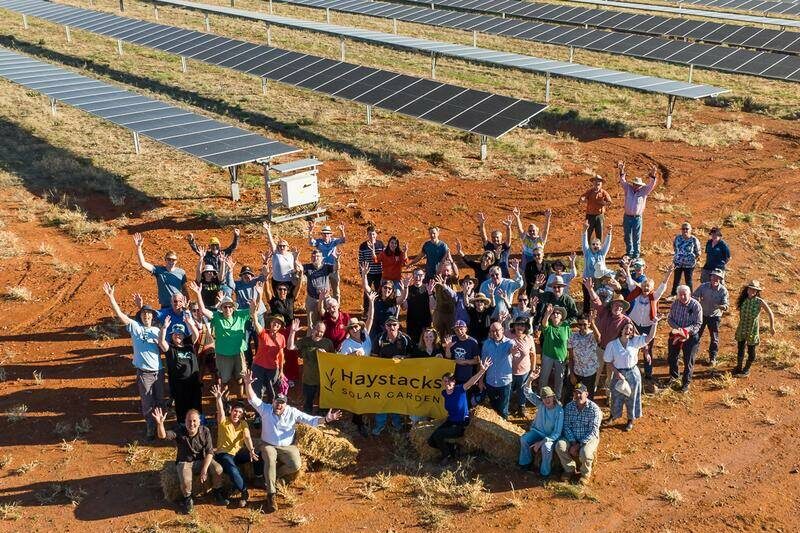
By Jennifer Dudley-Nicholson
By the side of the highway in Grong Grong, in the NSW Riverina region, Australia’s first solar garden is almost ready to harvest.
The development is expected to deliver a bounty to 175 solar gardeners within weeks in the form of credits on their electricity bills.
But developers and energy experts hope the 1.5 megawatt project delivers a lot more: namely, a new option for renters and apartment dwellers around Australia who have been locked out of the solar market.
Work on the Haystacks Solar Garden began in January 2020, based on similar developments that have proven popular in the US and Germany.
Community Power Agency project director Kim Mallee said the concept for the project was to extend the experience of owning rooftop solar panels to people who had been locked out of the market.
The group includes people who rent their homes, those who live in apartments, and others with heritage-listed or shady roofs.
“What we really wanted to be able to demonstrate was what it would look and feel like for somebody who doesn’t have a sunny roof… for them to invest directly in solar and get that benefit on their electricity bill,” Ms Mallee told AAP.
“That’s the model we were trying to mimic.”
Achieving that result had taken four years, two energy retailers and an innovative approach to regulatory hurdles, Ms Mallee said.
One-hundred-and-seventy-five investors, known as solar gardeners, helped to fund the project, along with a grant from the NSW government Regional Community Energy Fund and equity from the Grong Grong Solar Farm.
The project took an innovative approach to recognising individual investments, by using co-operative capital units, and Energy Locals signed up to process credits after its first electricity retailer folded.
Ms Mallee said the organisation had detailed its processes and solutions in a public report to help other groups investigate and invest in solar gardens.
“It’s a proof of concept, proof it can be done, and we have a pathway to doing it,” she said.
“We’ve had quite a lot of interest from different organisations, especially councils, looking at implementing solar gardens as a model for solar development.”
Griffith University associate professor Tim Nelson, who is a member of the Climate Council, said he expected to see more solar gardens developed in Australia now that one group had proven the concept.
“We know there’s a huge love affair with solar and we’ve got lots of space in Australia,” he said.
“These types of solar gardens can play a particular role in being able to tie your energy consumption to your investment. It’s an innovative model.”
Mr Nelson said one third of Australian homes currently featured solar panels but investments in external solar projects could be one solution for those who could not install the technology on their homes.
Others locked out of the solar market could consider investing in green energy from their retail provider, he said.
Who can be trusted?
In a world of spin and confusion, there’s never been a more important time to support independent journalism in Canberra.
If you trust our work online and want to enforce the power of independent voices, I invite you to make a small contribution.
Every dollar of support is invested back into our journalism to help keep citynews.com.au strong and free.
Thank you,
Ian Meikle, editor





Leave a Reply